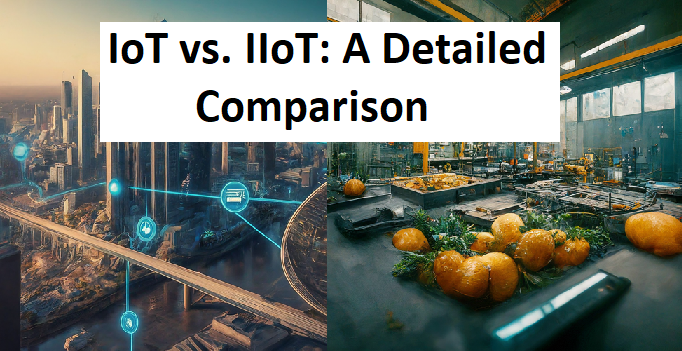IoT vs. IIoT: A Detailed Comparison – explores the key differences between the Internet of Things (IoT) and the Industrial Internet of Things (IIoT). Discover how these technologies are transforming various industries and the unique characteristics that set them apart.

The Internet of Things (IoT) and the Industrial Internet of Things (IIoT) are often used interchangeably, but they have distinct characteristics and applications. Let’s delve into the key differences between these two technologies.
IoT: Connecting Everyday Objects
IoT refers to the network of physical devices, vehicles, home appliances, and other objects embedded with electronics, software, sensors, and network connectivity that enable them to collect and exchange data. IoT devices can communicate with each other and with the internet, allowing for remote monitoring, control, and automation.
Key Characteristics of IoT:
- Consumer-focused: IoT devices are primarily designed for consumer use.
- Data-driven: IoT collects and analyzes data to provide insights and improve user experiences.
- Real-time applications: IoT enables real-time monitoring and control of devices.
- Examples of IoT devices: Smart homes, wearable devices, connected cars, and smart appliances.
IIoT: Transforming Industrial Processes
IIoT, a subset of IoT, specifically targets industrial applications. It involves connecting machines, sensors, and other industrial equipment to the internet, enabling data-driven insights and automation of industrial processes. IIoT is transforming manufacturing, energy, transportation, and other industries.
Key Characteristics of IIoT:
- Industry-focused: IIoT devices are designed for industrial use and often have ruggedized designs.
- Data-intensive: IIoT generates massive amounts of data that can be analyzed to optimize operations.
- Predictive analytics: IIoT enables predictive maintenance, reducing downtime and improving efficiency.
- Examples of IIoT applications: Smart factories, remote monitoring of industrial equipment, energy management, and supply chain optimization.
Key Differences Between IoT and IIoT
| Feature | IoT | IIoT |
|---|---|---|
| Focus | Consumer | Industrial |
| Applications | Smart homes, wearables, connected cars | Smart factories, energy management, transportation |
| Data volume | Moderate | Massive |
| Security concerns | Privacy and data breaches | Cybersecurity threats to critical infrastructure |
| Regulatory compliance | Consumer protection laws | Industrial safety and environmental regulations |
The Convergence of IoT and IIoT
While IoT and IIoT have distinct characteristics, they are increasingly converging. Industrial devices are becoming more consumer-like, and consumer devices are being adopted for industrial applications. This convergence is driving innovation and creating new opportunities for businesses.
Examples of convergence:
- Smart factories using consumer-grade IoT devices for data collection and analysis.
- Industrial sensors being integrated into consumer products like fitness trackers.
In conclusion, IoT and IIoT are both powerful technologies that are transforming various industries. While they have distinct characteristics, they are becoming increasingly interconnected, creating new opportunities for innovation and growth. Understanding the differences between IoT and IIoT is crucial for businesses looking to leverage these technologies effectively.
Home | Join us on Facebook, Twitter, YouTube, Instagram, Quora, Reddit, LinkedIn, Pintereset, Blogger.